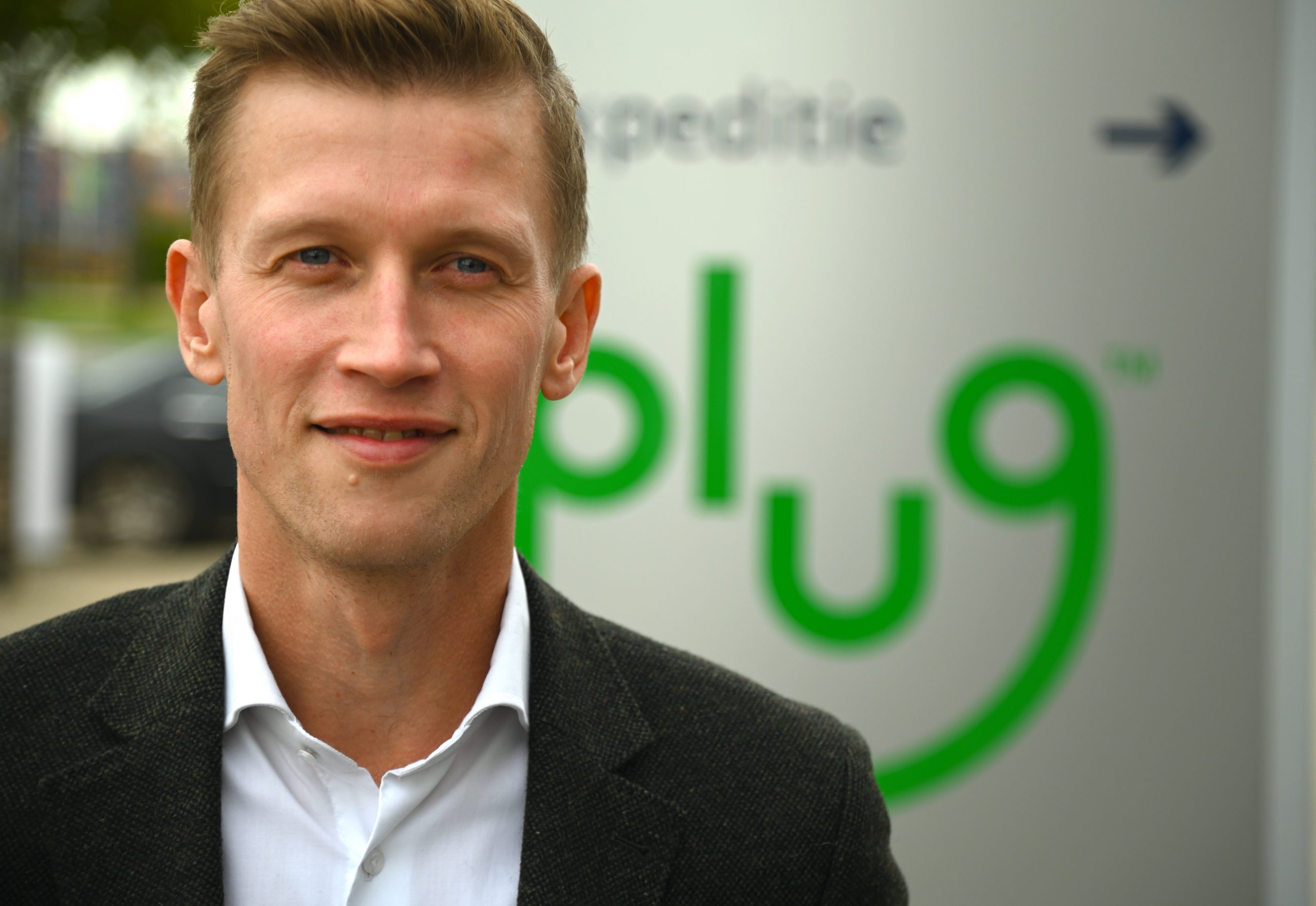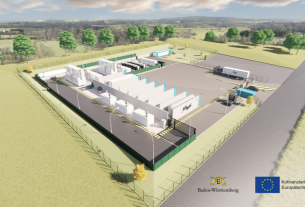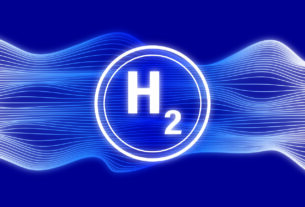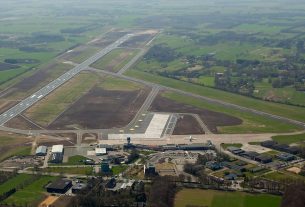The Netherlands – With the acquisition of the Dutch company Frames, US-based Plug Power acquired a system integrator for building green hydrogen plants. After all, such a plant is more than just the electrolyzer. ‘A missing puzzle piece? Perhaps more of a missing link,’ argues Jordi Zonneveld, who now plays a central role within the new Plug unit.
Current developments in hydrogen, seem to be shaking up the process industry quite a bit. In northwest Europe alone, there are already plans for gigawatts of new green hydrogen plants to be built. Because in fact, there is not that much standing yet. Europe’s largest is in Puertollano, Spain: 20 megawatts. And around this time, Linde will commission a 24-megawatt electrolyzer in Leuna, Germany. If many plans go ahead, these will only be small ones in a few years’ time.
So work to do for builders and technology suppliers. In those sectors, too, there has been a lot of stir lately. For instance, the rise of green hydrogen production is creating new market opportunities and thus new strategies. New companies are emerging, but rapid developments are also forming the basis for mergers and acquisitions. US-based Plug Power, for instance, acquired Frames less than a year ago. The Dutch offsite builder of industrial plants had slimmed down considerably in recent years. It was in dire straits at the end of last decade due to low oil and gas prices, which meant a lack of orders from a key market segment.
At the same time, Frames was also too small to fulfil its burgeoning hydrogen ambitions. As early as 2016, the Alphen aan de Rijn-based company had the idea of making the integration and construction of hydrogen plants a major core business. ‘But that market wasn’t there at the time,’ says Jordi Zonneveld, who co-founded the hydrogen plans at Frames. ‘In a new market, it is often a matter of long term commitment and that is difficult for an SME like Frames.’
Antwerp
The much larger US company Plug Power also had its eye on green hydrogen production a few years back. Plug Power was already a major player in the Champions League of fuel cells, at the other end of the hydrogen spectrum. The company wanted to expand. So not only producing fuel cells that convert hydrogen into electricity, but also electrolyzers that actually convert electricity into hydrogen. Plug Power even wants to go a step further. It plans to become a producer of hydrogen itself, thus becoming part of production chains in the process industry and energy sector.
Meanwhile, the group has several investment projects underway in the US and also wants to build a 100-megawatt green hydrogen plant in the Port of Antwerp, for example. Plug Power has now signed a 30-year concession agreement to build the plant in the NextGen District. Construction of the plant will begin after completion of the permitting process, expected in late 2023. The first production of green hydrogen is expected in late 2024 and the plant will be fully operational in 2025.
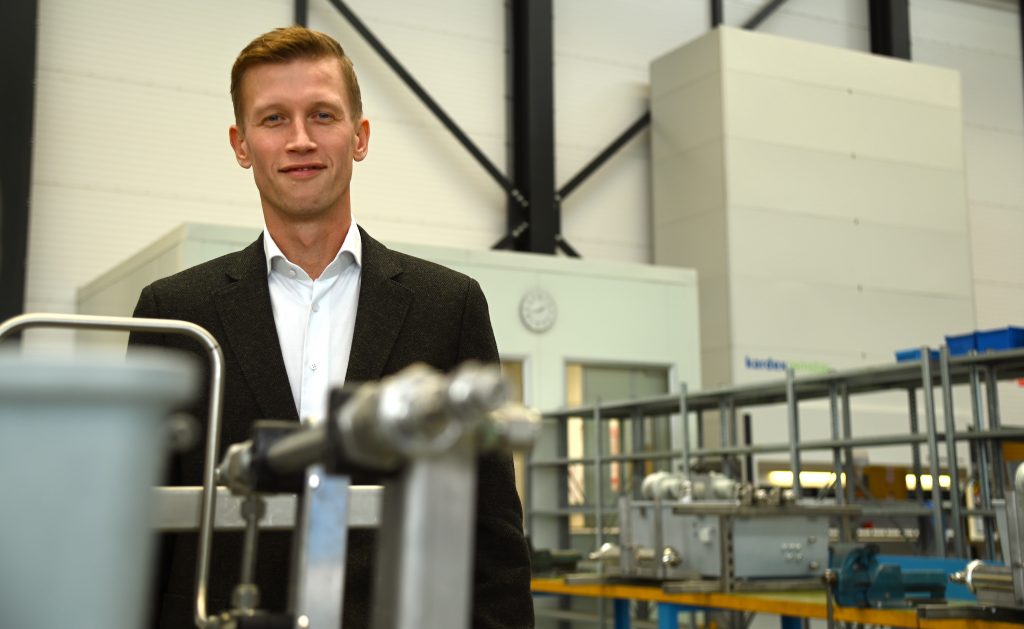
Completing
The US company went in search of missing puzzle pieces in its strategy. In 2020, for instance, it acquired Giner ELX, an experienced producer of Proton Exchange Membrane (PEM) electrolyzers. With that company, among others, Frames had worked out several concepts for building hydrogen plants. Zonneveld: ‘We are a system integrator. Giner produces the electrolyzer stacks. However, a complete hydrogen plant is much more than just the electrolyzer stacks.’
The heart of the green hydrogen plant, the electrolyzer stack, requires many more supporting components. Think, for example, of a water treatment plant. Zonneveld: ‘Electrolysis of water into hydrogen requires ultra pure water. That can be achieved with reverse osmosis and deionisation. If you use salty seawater, you need to desalinate it before that.’ As with Lhyfe’s first floating hydrogen pilot, which was launched at the end of September in Saint-Nazaire on the French west coast, for which Alphen aan de Rijn supplied the electrolyzer system. And there are many more plans to start producing hydrogen at sea. And then only salt water is in sufficient supply. Water treatment is just one of the extra units that complete a hydrogen plant, says Zonneveld. ‘You also need several other plants for gas treatment and heat management, among other things.’
3D models
So the fact that Plug Power acquired Frames in late 2021 was merely a logical next step in its strategy. ‘A missing piece of the puzzle? Perhaps more of a missing link,’ corrects Zonneveld. ‘We bring different plants together into a fully-fledged plant. And that expertise was still insufficiently present at Plug Power.’ And for Frames, the takeover gave it precisely the long breath currently needed for hydrogen projects. After all, in recent years, the market was still mainly limited to plans and prospects. That seems to be changing this year. The game seems to be on the wagon. If many of the plans go ahead, things will go pretty wild in the coming years. Zonneveld: ‘You can also see it in the presentations at the various conferences and summits. Until last year, you only saw 3D models. Now we can show more and more pictures of real installations.’
Ammonia production
So the beginning is there. And orders are also going quite fast now. Currently, Plug System Solutions, as the unit is now called, already has more than 300 megawatts of hydrogen plants on order. Orders for the two modular concepts that fit into containers, for example. Plug designed full-scale hydrogen production plants with the electrical capacity of one megawatt and five megawatts. ‘We already have around twenty of both on order. So altogether about 120 megawatts already. We also have a few larger orders that are being designed separately. For instance, a large order for OCI in Egypt.’
Last November, Fertiglobe, a strategic partnership between chemical company OCI and oil company Adnoc, selected Plug Power as supplier of 100-megawatt electrolyzer for the production of green hydrogen. As feedstock for 90,000 tonnes of green ammonia production in Egypt’s Ain Sokhna. Zonneveld: ‘That already puts us at 220 megawatts. Add to that several other orders and we go well above 300 megawatts.’
Easy on the table
The installations are designed by branches of Plug System Solutions in Alphen aan de Rijn, India and the US. Major projects are also coordinated from these locations. Zonneveld: ‘We still do very little construction here in Alphen aan de Rijn. For that, we move to larger construction sites in Europe and beyond, including in East Germany, the Middle East and Vietnam. We are now developing ten-megawatt building blocks for the larger orders. These no longer fit in containers, like the one and five megawatt installations.’
Incidentally, the installations do not grow proportionally with the number of megawatts. ‘The five megawatt plant is about three times larger, and the size per megawatt decreases as the plants get even larger. And of these, the electrolyzer stacks themselves are only a modest part. The one-megawatt electrolyzer stack easily fits on the table here. Most of the size is determined by the supporting plants and pipes. The diameter of a pipe, for example, increases only slightly when doubling its capacity.’

